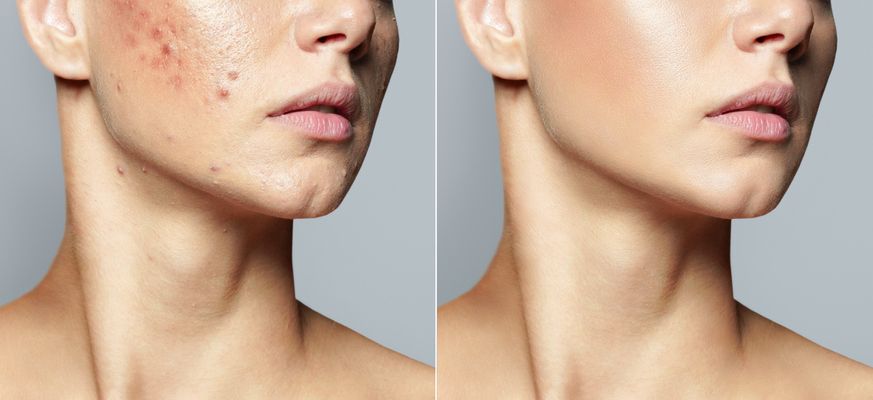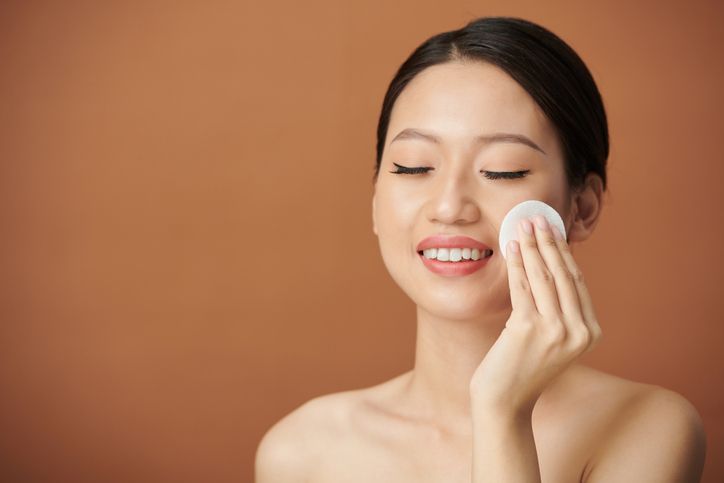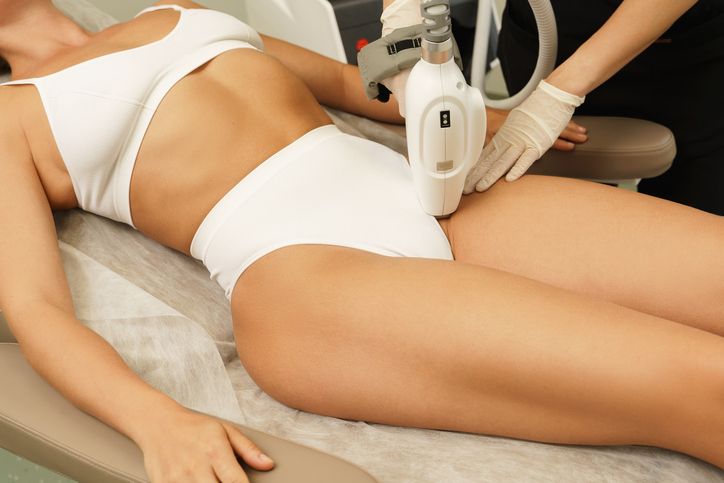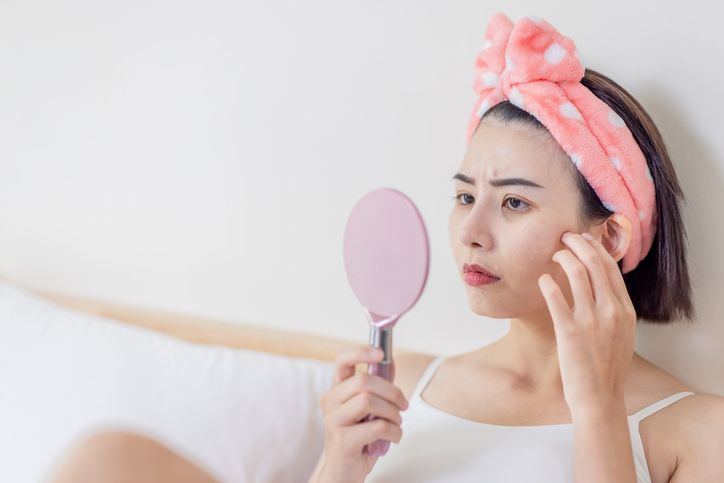- Home
- Trend
- Weight Loss Strategies
- Acne Tips
- Hair Health Information
- Blemish Removal Tips
- Acne Scar Removal Tips
- Muscle Building Techniques
- Intimate Care Tips
- Postpartum Intimate Care
- Eye Bags Wiki
- Tips for Face Slimming
- Secret of Permanent Hair Removal
- Breast Enlargement Tips
- Cure to Snoring
- Marionette Lines
- Skin-Tightening Secrets

免費體驗
Acne Scarring Treatment
1 Minute Self-Registration
Date should not be before minimal date
Dealing with acne scars and achieving a flawless complexion can be a transformative journey. Whether you're looking to cover any kinds of blemishes like acne or acne scars, this comprehensive guide explores effective strategies and makeup techniques for individuals with acne-prone and oily skin. Let's delve into the world of full coverage makeup, translucent powders, and skincare tips to help you achieve the flawless skin tone you desire.
1
Why Does My Face Look So Uneven?

Acne scars can make the skin appear uneven due to changes in the texture and pigmentation of the affected areas. There are different types of acne scars, and each can contribute to the uneven appearance of the skin in its own way:
Depressed or Atrophic Scars
These scars result from a loss of tissue, commonly seen in conditions like ice pick scars, boxcar scars, and rolling scars. They create indentations in the skin, making it uneven.
Raised or Hypertrophic Scars
Some people may develop raised scars due to an overproduction of collagen during the healing process. These scars can make the skin appear uneven and may have a reddish or pinkish hue.
Hyperpigmentation
After acne lesions heal, they can leave behind areas of increased pigmentation, known as hyperpigmentation. This can make the skin tone uneven, with darker spots in the areas where acne was present.
Hypopigmentation
In some cases, the skin may lose pigment in the healed acne areas, resulting in lighter spots compared to the surrounding skin.
Textural Changes
Even if the color is consistent, changes in the texture of the skin due to scarring can create an uneven appearance. This is particularly true for atrophic scars that create irregularities on the skin surface.
It's important to note that the severity of acne scars varies among individuals, and genetics, skin type, and how the acne was treated can all influence the extent of scarring.
2
Conceal Acne Scarring Problem With the Right Make-Up Tools

Thankfully, there are many makeup products can help cover acne scars and create a smoother, more even skin tone. Here are some key types of makeup products that are commonly used for this purpose:
Full Coverage Foundations
These foundations are formulated with high levels of pigmentation to provide maximum coverage. They can help conceal various imperfections, including acne scars.
Concealers
Concealers are highly pigmented products designed to cover specific areas, such as dark spots and scars. They come in various forms, including liquid, cream, and stick concealers.
Colour Correctors
Colour correctors can be used to neutralise specific tones on the skin, such as redness or discoloration caused by acne scars. Peach or orange tones can help counteract dark spots, while green tones can reduce redness.
Setting Powders
Translucent setting powders can be applied to set foundation and concealer, preventing them from settling into fine lines and textured areas, including acne scars.
Buildable Formulas
Makeup products with buildable formulas allow you to layer the product gradually, achieving the desired coverage without looking heavy or cakey.
Makeup Primers
Primers create a smooth base for makeup application, helping to fill in fine lines and texture variations caused by acne scars. They can improve the overall finish of your makeup.
When selecting makeup products to cover acne scars, it's important to consider your skin type, the specific needs of your skin, and the desired finish. Additionally, proper skincare, including moisturising and prepping the skin, can contribute to a smoother makeup application. Let's take a look at how you should complete your daily makeup that has no existence of acne scar!
- What Your Skin Care Specialist Won't Tell You: What Are Pockmarks, How To Differentiate & Cure Them
- What Are Comedones? Tracing Their Life Cycle and Impact on Skin
- Tighten Pores With Ease: 5 Mistakes That Could Be Holding You Back
- How Effective Is Acne Scar Creams with Acid? A Must Read For People With Sensitive Skin
3
More Tips On the Colour Tone You Should Use For a Better Coverage On These Scars

As we know, foundation and concealer play the most crucial role in perfecting the skin condition, and the ideal makeup colour tones for covering acne scars can vary based on an individual's skin tone. Here are general recommendations for normal, dark, and fair skin tones:
Normal Skin Tone
Foundation: For normal skin tones, look for foundations with a neutral undertone. This means a foundation that is neither too warm (yellow or golden) nor too cool (pink or blue). Choose a shade that closely matches your natural skin tone for a seamless finish.
Concealer: Opt for a concealer that matches your skin tone or has a slight peach undertone to cover dark spots and acne scars.
Dark Skin Tone
Foundation: Dark skin tones often have warm undertones. Look for foundations with rich, warm undertones, such as golden or caramel shades. Brands are increasingly offering diverse shade ranges to cater to a variety of undertones within dark skin tones.
Concealer: Choose a concealer that complements your undertone, and consider using an orange or peach colour corrector to neutralise dark spots before applying concealer.
Fair Skin Tone
Foundation: Fair skin tones generally have cool undertones, so look for foundations with a pink or neutral undertone. Be cautious not to go too warm, as it might appear too yellow on fair skin. Many brands offer a range of fair shades with various undertones.
Concealer: Use a concealer that matches your skin tone or has a slightly yellow or peach undertone to counteract any redness associated with acne scars.
As individual variations exist within each skin tone category, it's best to test shades on your skin and adjust based on your unique undertones. Additionally, the choice between liquid, cream, or powder formulations depends on personal preference and the specific needs of your skin. Always blend makeup products well to achieve a natural and seamless look!
4
Best Doll-Up Routine That Can Conceal Acne Scars!

1. Cleansing and Makeup Removal
Begin your makeup routine by thoroughly cleansing your face. Use a gentle makeup remover or micellar water to eliminate any leftover products, impurities, and dead skin cells. This step is crucial for creating a clean and smooth canvas for makeup application, promoting a flawless finish and helping prevent further breakouts.
2. Moisturize
Apply a lightweight, non-comedogenic moisturiser to hydrate your skin. Moisturising is essential to create a well-hydrated base for makeup. It ensures that the skin is smooth, plump, and prepared for the application of other makeup products.
3. Makeup Primer
Evenly apply a makeup primer across your face. Primers play a crucial role in filling in fine lines and texture variations caused by acne scars. This step helps to create a smooth and even surface, allowing makeup to adhere better and last longer.
4. Full Coverage Foundation
Choose a full coverage foundation that closely matches your skin tone. Using a makeup sponge or brush, concentrate on areas with acne scars for targeted coverage. Blend the foundation evenly for a seamless and natural-looking finish. Full coverage foundations are formulated to conceal imperfections, providing a high level of pigmentation.
5. Spot Concealing
Use a highly pigmented concealer to specifically target individual spots and dark areas caused by acne scars. Ensure that the concealer matches your skin tone or has a peach or yellow undertone to neutralise discoloration effectively. Apply the concealer precisely to achieve targeted coverage.
6. Colour Correcting
For those with hyperpigmentation or uneven skin tone, consider using colour-correcting products before applying concealer. Peach or orange tones can neutralise dark spots, while green tones can counteract redness associated with acne scars. Apply these corrective colours strategically to balance out discoloration.
7. Set Your Makeup
Set your makeup with a translucent powder to prevent it from moving throughout the day and settling into textured areas, such as indented scars. Apply a light dusting of loose powder to lock in your makeup and provide a matte finish. This step helps maintain the integrity of your makeup look.
8. Buildable Formulas
Opt for buildable formulas when applying makeup to areas with scars of varying depths. Buildable products allow you to layer without creating a heavy or cakey appearance. This is particularly useful for achieving the desired coverage without compromising a natural look.
9. Setting Spray
Conclude your makeup routine with a setting spray. Setting spray helps lock in your look, ensuring that your makeup stays in place throughout the day. It enhances the longevity of your makeup and provides a fresh, natural finish.

免費體驗
Acne Scarring Treatment
1 Minute Self-Registration
Date should not be before minimal date
5
The More Crucial Step: Makeup Removal

Remember, while makeup can effectively conceal acne scars, skincare routines, and professional treatments can contribute to long-term improvement in the appearance of the skin. It's essential to remove makeup thoroughly at the end of the day and take care of your skin to maintain its health. Here's why:
Preventing Pore Clogging
Makeup, especially foundation and concealer, can clog pores if not adequately removed. For those with acne scars, preventing further breakouts is crucial. Leaving makeup on overnight may lead to the accumulation of debris, increasing the risk of clogged pores and potential acne flare-ups.
Promoting Skin Regeneration
Effective makeup removal allows the skin to breathe and promotes the natural regeneration of skin cells. For individuals with acne scars, the turnover of skin cells is essential for minimising the appearance of scars over time. Fresh, rejuvenated skin is more conducive to overall skin health.
Reducing Irritation and Inflammation
Some makeup products contain ingredients that may cause irritation, especially for those with sensitive or acne-prone skin. Leaving makeup on for extended periods can lead to increased inflammation, making it challenging for the skin to heal. Thorough makeup removal helps minimise the risk of irritation and promotes a calmer complexion.
Enhancing the Efficacy of Skincare Products
Skincare products, such as serums and treatments targeting acne scars, are more effective when applied to clean skin. Removing makeup ensures that these products can penetrate the skin properly, maximising their benefits in promoting skin repair and reducing the visibility of scars.
Preventing Uneven Skin Texture
Makeup residue left on the skin can contribute to uneven texture, accentuating the appearance of scars. Regular and thorough makeup removal helps maintain a smooth skin surface, reducing the risk of makeup settling into indented scars or uneven skin tone.
Proper makeup removal is not just a step to end the day; it is a crucial component of skincare for individuals with acne scars. By diligently removing makeup, you contribute to the overall health of your skin, minimise the risk of further breakouts, and create an optimal environment for long-term improvement in the appearance of acne scars.
6
Other Skin Care Methods You Should Try

Skincare Ingredients for Acne-Prone Skin: Incorporate Salicylic Acid
If you're dealing with acne-prone skin, introducing salicylic acid into your skincare routine can be a game-changer. Here's why:
- Salicylic acid, a beta hydroxy acid, excels at exfoliating the skin. By sloughing off dead skin cells, it helps unclog pores, reducing the likelihood of new acne breakouts. - Acne often stems from blocked pores. Salicylic acid penetrates deep into the pores, breaking down excess oil and debris, preventing future acne lesions. - Regular use of salicylic acid contributes to a smoother complexion. By encouraging the shedding of dead skin cells, it reveals fresher, healthier skin and minimises the appearance of uneven texture.
Maintaining a Flawless Complexion: Creating an Optimal Skincare Routine
To prevent acne scars from worsening and maintain a flawless complexion, establish a consistent skincare routine focusing on:
- Use a mild, non-comedogenic cleanser to cleanse your skin without stripping it of natural oils. - Incorporate a gentle exfoliant to remove dead skin cells, preventing pores from becoming congested and enhancing the efficacy of other products. - Even acne-prone skin needs hydration. Choose a lightweight, non-comedogenic moisturiser to keep the skin balanced.
Fix the Root: Acne Scarring Treatment
Fortunately, there are various treatments available, such as laser therapy, chemical peels, microneedling, and topical products, that can help improve the appearance of acne scars and promote smoother, more even skin.
If you wish to get rid of existing acne scars once and for all, consider addressing the root cause with treatments like laser therapy. Laser treatments target specific areas of scarring, stimulating collagen production and aiding in skin renewal.
- Tighten Pores With Ease: 5 Mistakes That Could Be Holding You Back
- Revealing Radiance: A Friendly Guide to Chemical Peel for Acne Scar
- What Your Skin Care Specialist Won't Tell You: What Are Pockmarks, How To Differentiate & Cure Them
- How Effective Is Acne Scar Creams with Acid? A Must Read For People With Sensitive Skin
7
Conclusion

Covering acne scars and achieving a flawless complexion is not just about makeup; it's a holistic approach that involves skincare and the right products. Experiment with full coverage makeup, translucent powders, and oil-free options to find the perfect combination for your unique skin type. For those who wish to fix the root issue, do remember to consider the right treatment, so you can confidently embrace a flawless complexion that radiates beauty from within.

免費體驗
Acne Scarring Treatment
1 Minute Self-Registration
Date should not be before minimal date
FAQ

1. Can loose powders worsen acne on oily skin?
Loose powders, when chosen wisely, can be suitable for oily skin. Opt for oil-free and non-comedogenic formulations to avoid clogging pores, which could worsen acne.
2. Can natural remedies effectively reduce the appearance of acne scars?
Natural remedies like aloe vera, rosehip oil, and honey are often praised for their skin-healing properties. While they may offer some benefits, it's essential to manage expectations. Natural remedies may help with skin hydration and overall skin health, but professional treatments and skincare products with active ingredients are often more effective for significant improvement in the appearance of acne scars.
3. Does having oily skin make acne worse?
Oily skin can contribute to acne, as excess oil can clog pores and lead to breakouts. However, with a proper skincare routine and non-comedogenic products, you can manage both oily skin and acne effectively.
4. How can I choose the right loose powder for oily skin prone to acne?
Look for loose powders labelled non-comedogenic and oil-free. Ingredients like silica can help absorb excess oil without aggravating acne. Conduct patch tests to ensure compatibility with your skin. Remember, individual responses to skincare products can vary, so it's essential to consider your specific skin concerns and consult with a dermatologist for personalised advice.
5. Can sun exposure make acne scars more noticeable?
Yes, prolonged sun exposure can contribute to the increased visibility of acne scars. UV rays can darken pigmentation, making scars more pronounced. It is crucial to protect your skin with sunscreen to prevent further discoloration and promote the overall health of the skin.









